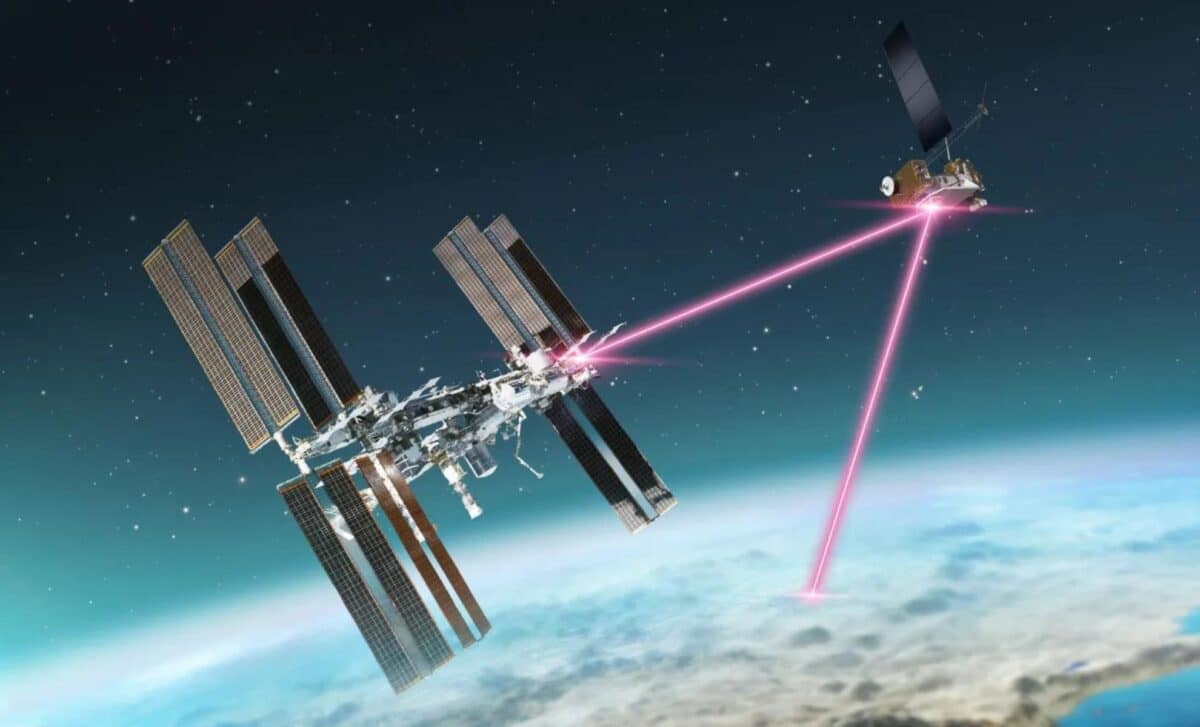NASA has successfully demonstrated a groundbreaking technology by streaming 4K video from an aircraft to the International Space Station (ISS) and back using laser communication.
This achievement, conducted by a team at NASA's Glenn Research Center, marks a significant advancement in data transmission technology, potentially paving the way for live 4K broadcasts of future lunar missions under the Artemis program.
Breakthrough in Laser Communication Technology
Traditionally, NASA has relied on radio waves for space communications, which, while effective, have limitations in data speed and volume. The new laser communication technology uses infrared light to transmit data 10 to 100 times faster than current radio frequency systems.
This recent test involved a portable laser terminal attached to a Pilatus PC-12 aircraft, which sent data to an optical ground station in Cleveland. From there, the data traveled via Earth-based networks to NASA’s White Sands Test Facility in New Mexico, and was then relayed to the Laser Communications Relay Demonstration (LCRD) in orbit.
The LCRD transmitted the data to the ILLUMA-T (Integrated LCRD LEO User Modem and Amplifier Terminal) payload on the ISS, which then sent it back to Earth. This complex process demonstrated the potential for high-speed, high-bandwidth communication links, which are essential for future deep-space missions.
NASA highlighted the significance of this advancement, noting, "We can communicate with Voyager 1, which is over 15 billion miles away using radio waves, but laser communication can transmit 10 to 100 times more data at faster speeds."
This capability is crucial for missions beyond Earth's orbit, where the volume of data and speed of communication are critical for mission success. The ability to use lasers for data transmission represents a major leap forward in space communications technology, potentially revolutionizing how we connect with spacecraft exploring distant worlds.
Enhancing Future Space Missions
The success of this laser communication test has broad implications for NASA's future missions, particularly the Artemis program, which aims to return humans to the Moon by 2026. The ability to stream 4K video from space could revolutionize how we experience space exploration, providing high-definition, real-time visuals of astronauts working on the lunar surface.
Dr. Daniel Raible, principal investigator for the HDTN project at Glenn, emphasized the importance of this technology, stating, "These experiments are a tremendous accomplishment. We can now build upon the success of streaming 4K HD videos to and from the space station to provide future capabilities, like HD videoconferencing, for our Artemis astronauts, which will be important for crew health and activity coordination."
The clarity and immediacy of 4K video will enhance the ability of mission control to monitor astronaut activities, assess conditions on the lunar surface, and provide immediate support if needed.
This capability will not only enhance scientific data collection but also improve the communication and operational efficiency of future missions, allowing for better coordination between astronauts and mission control.
The technology could also play a crucial role in public engagement, allowing the world to experience space exploration in unprecedented detail. The use of lasers for communication could also help mitigate the limitations of radio waves, such as interference and limited bandwidth, providing a more reliable and efficient method for data transmission.
Continuous Testing and Future Developments
While the ILLUMA-T payload is no longer installed on the ISS, NASA will continue testing the 4K video streaming capabilities using the Pilatus PC-12 aircraft through the remainder of July. This ongoing testing is crucial for refining the technology and addressing any issues that arise.
The use of laser communication is seen as a pivotal development for future space exploration, especially as missions venture beyond low Earth orbit to destinations like Mars. The ability to transmit large amounts of data quickly and reliably is vital for the success of these missions, enabling detailed scientific analysis and providing critical support for crewed missions.
As NASA continues to develop and test these technologies, the advancements in laser communication could soon become a standard for space missions, enhancing our ability to explore and understand the universe. Dr. Raible highlighted the potential of this technology, stating, "We can envision a future where HD videoconferencing becomes a routine part of space missions, providing a direct and immediate connection between Earth and space."
This vision underscores the transformative potential of laser communication, not only for NASA's Artemis program but also for the broader field of space exploration. The success of these tests represents a significant step forward in realizing this vision, paving the way for a new era of high-definition, real-time space communication.




